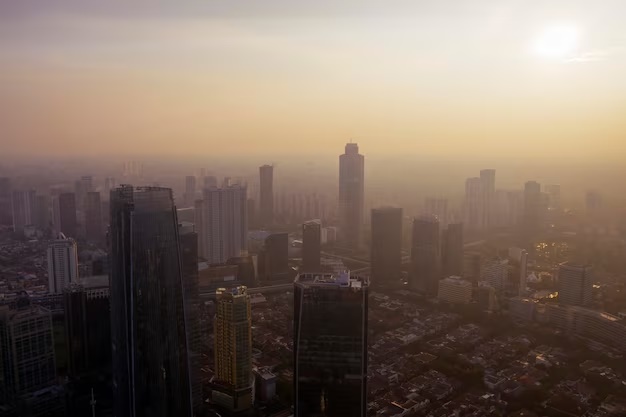Air pollution remains a problem in various regions. Although awareness of air pollution has increased, the urgency to find a solution has yet to become a priority. The impact is significant for everyone, including children as the most vulnerable group.
Co-founder of Nafas, Piotr Jakubowski, explained air pollution is significantly higher in the dry season than in the rainy season. This phenomenon occurs due to the connection between wind direction and pollution sources. According to a study conducted by the Center for Research on Energy and Clean Air (CREA), the seasonal changes exert a substantial impact on air pollution. Piotr emphasized that air pollution has evolved into a daily challenge in Indonesia, thus prompting people to prioritize their health and contemplate systemic solutions for addressing air pollution issues.
“Currently, there are several categories of sources of pollution, such as coal-fired power plants (CFPPs), industry, transportation, logistics, land burning, and indiscriminate waste. The source of pollution depends on the urban activity itself, and the kind of impact it will have also depends on its geographical location. For example, the city of Bandung, which has cool air. However, due to its geographic basin position, air pollution in Bandung is quite high. If the wind does not disperse the pollution, it can linger for a long time compared to Jakarta, which has a source of sea wind,” said Piotr in a Twitter or X Space discussion entitled Tackle Air Pollution with Coal-fired Power Plant Intervention.
The lead analyst of CREA, Lauri Myllyvirta, said that based on a recent study titled “Health Benefits of Just Energy Transition and Coal Phase-out in Indonesia” conducted by CREA and IESR, coal-fired power plants (CFPPs) caused 10,500 deaths in Indonesia in 2022, with this number projected to soar to 180,000 by 2040 if coal plants continue to operate.
“Jakarta is one of the cities in Indonesia most affected by coal-fired power plants due to their proximity. During the dry season, the wind direction shifts from east to south, resulting in CFPPs in Cirebon, Cilacap, and other areas contributing to pollution in Jakarta. The air reaching Jakarta is already polluted, and the emissions within Jakarta further compound the issues. There are chemical reactions between the pollutants, and this causes air pollution to increase,” said Lauri.
For this reason, according to Lauri, it is advisable to install emission control devices at the CFPP, enabling the Government to control the emissions they emit. Air pollutant emissions from coal-fired power plants are one of the causes of loss of life in Indonesia. In 2022, health costs associated with CFPP operation could reach USD 7.4 billion, equivalent to IDR 111.126 trillion.
Senior analyst of the Institute for Essential Services Reform (IESR), Raditya Yudha Wiranegara, mentioned that the power plants scattered around Jakarta significantly contribute to elevated pollution levels in the city. He pointed out that there are approximately eight CFPP situated in the vicinity of Jakarta, including CFPPs in the east of Jakarta (Suralaya CFPP, Lontar CFPP, Banten CFPP) and in the West (Cirebon 1 and 2 CFPPs, Batang CFPP, Cape Jati CFPP). Based on the CREA and IESR studies, several CFPPs have the most significant impact on health, as measured by the number of deaths caused and health costs.
“The five top coal-fired power plants (CFPPs) indicated the most significant impact on health, including the Central Java Power Plant in Batang, Lontar CFPP, Cirebon 1 and 2 CFPPs, and Cilacap CFPP. These five CFPPs are integrated to the Java-Bali electricity network, which is currently oversupplied. While their retirement isn’t a problem to air pollution, there’s concern about network instability since most are in the West. It’s necessary to consider accelerating renewable energy, including solar PV construction, if they’re retired,” said Raditya.

